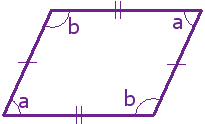How to use Children's Books to Teach Maths?
After reading the story book, we would encourage children to retell the story in round robin through
1) pictures
2) texts
The class teacher can design a mathematical task for the children.
She must always bear in mind - 'How can this mathematical task be differentiated for different
learners?'
Differentiation Instruction (by Tomlinson)
1) By content
2) By process
3) By product
.jpg)
Children's literature is an effective tool for mathematics instruction because it:
- incorporates stories into the teaching and learning of mathematics
- introduces math concepts and contexts in a motivating manner
- acts as a source for generating problems and building problem solving skills
- helps build a conceptual understanding of math skills through illustrations
http://teacher.scholastic.com/reading/bestpractices/math.htm
What Is Differentiated Instruction?
By: Carol Ann Tomlinson
Differentiation means tailoring instruction to meet individual needs. Whether teachers differentiate content, process, products, or the learning environment, the use of ongoing assessment and flexible grouping makes this a successful approach to instruction.
At its most basic level, differentiation consists of the efforts of teachers to respond to variance among learners in the classroom. Whenever a teacher reaches out to an individual or small group to vary his or her teaching in order to create the best learning experience possible, that teacher is differentiating instruction.
Teachers can differentiate at least four classroom elements based on student readiness, interest, or learning profile:
- Content – what the student needs to learn or how the student will get access to the information;
- Process – activities in which the student engages in order to make sense of or master the content;
- Products – culminating projects that ask the student to rehearse, apply, and extend what he or she has learned in a unit; and
- Learning environment – the way the classroom works and feels.


.jpg)


.jpg)

